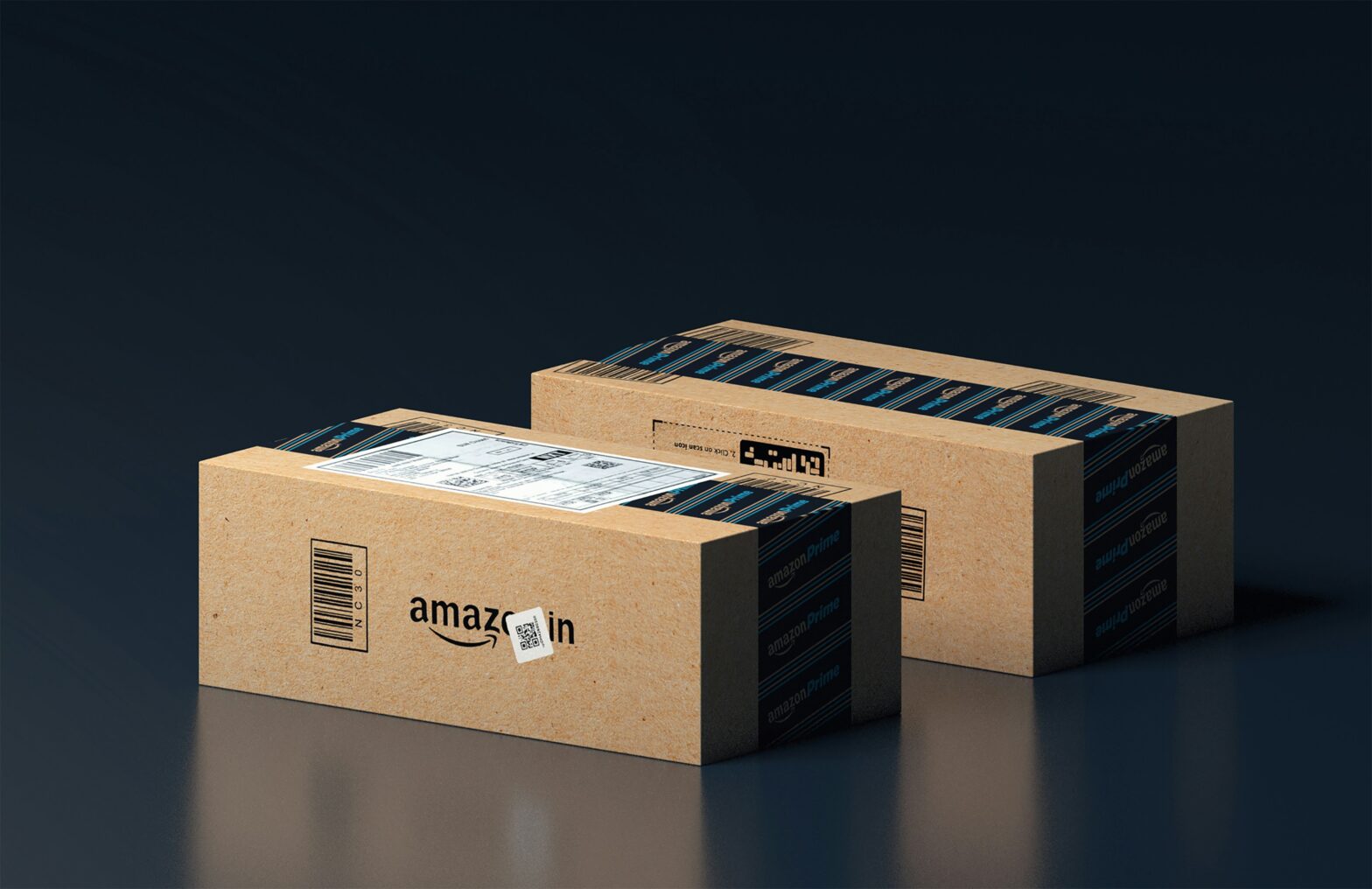“59% of eCommerce channel managers say their annual revenue would increase were they not constrained by channel conflict.”
– BCG 2021 Channel Manager Survey1
The Challenge.
B2B manufacturers are one of the last sectors of the economy to truly adopt and optimize eCommerce. But the evidence is now becoming clearer – companies that avoid eCommerce or continue to delay it will suffer. Mckinsey’s recent survey of B2B merchants supports this point.
“B2B companies winning the most market share are simultaneously employing five major modern sales and marketing tactics: deploying advanced sales technology, increasing hybrid sales teams and capabilities, delivering hyper personalization, tailoring strategies on third-party marketplaces, and achieving e-commerce excellence”2
As executives in manufacturing companies weigh the potential benefits of integrating B2B eCommerce into their sales strategies, the challenge of channel conflict emerges as a critical concern because it poses the risk of alienating existing dealers and distributors. By carefully balancing direct customer engagement with the health of traditional distribution channels, manufacturers can support revenue growth and market expansion through eCommerce.
Many manufacturers have avoided launching their own eCommerce sites because of their concerns about alienating their distribution channel. This stems from the perceived risks of adding a direct B2B ecommerce channel alongside existing dealer and distributor relationships. Disjointed pricing, product availability, service levels, sales policies and competitive dynamics across channels without coordination can undermine business partnerships.
Top management consulting firm BCG and other sources have validated that channel conflict is an important concern for B2B manufacturing merchants, and may in fact be a reason why some merchants delay adoption of a strategic e-commerce plan:
“In a BCG Digital Ventures survey of corporate e-commerce channel managers, 38% said channel conflicts are their top business concern, and 44% believe that such tensions will increase in the future.”3
Fortunately, manufacturers can mitigate most risks and optimize their sales ecosystems for productivity and profitability by following these 4 “no regret” strategies:
- Openly Discuss eCommerce Plans and Co-invest
- Ensure Channel Differentiation
- Execute a Price Management Strategy
- Boost Channel Compensation
—————————–
Strategy 1: Openly Discuss eCommerce Plans and Co-invest
Forging a manufacturer-direct B2B eCommerce sales path requires openly discussing plans with existing dealers and distributors. These relationships form the bedrock for reaching B2B customers, managing inventory, and delivering localized service, so it’s important to be open and honest with them.
In order to build transparent communication, manufacturers must convey their motivations behind this strategic move to building out a B2B eCommerce site, underscoring its complementary role in enhancing the existing offerings of distributors and dealers rather than creating competition.
These may include:
- Targeting specific customer segments or niche markets not adequately served by resellers
- Offering customization or configuration options that require direct interaction with the manufacturer
- Providing a platform for resellers to refer customers seeking direct purchases
- Leveraging direct sales data to identify trends and opportunities that benefit the entire sales ecosystem
As a great example, during the early days of the PC revolution, Dell Computers pioneered the direct sales model by selling directly to customers through mail order and later online, offering lower prices and more customized configurations. This approach allowed Dell to quickly gain market share, but it also raised concerns among resellers about being eliminated. To address these concerns, Dell framed its direct sales channel as complementary to resellers and emphasized continued collaboration with them for customers preferring traditional retail channels.
Co-invest with Dealers and Distributors
One of the most impactful ways manufacturers can support their reseller partners is by investing in their digital infrastructure and capabilities. The management and growth of an eCommerce presence involves providing the tools and resources necessary to manage and grow their ecommerce presence effectively.
For example, manufacturers can:
- Provide integration support to receive resellers’ inventory management of hard-to-find products (e.g. discontinued or limited run SKUs), and send them order information;
- Invest in data analytics and business intelligence tools that help resellers gain deeper insights into customer behavior, preferences, and purchasing patterns;
- Develop digital marketing solutions, such as automated email campaigns, targeted advertising, and social media management tools, to help resellers expand their online reach and engagement…..and apply co-marketing funds to support the channel;
- Provide comprehensive information that dealers can use when helping their customers evaluate the manufacturers’ products.
Manufacturers must also support the eCommerce capabilities of their distributors and dealers.This support can take many forms, such as:
- Providing access to product data, images, and descriptions for resellers to use on their websites;
- Offering training and resources to help resellers optimize their online presence and digital marketing efforts;
- Developing co-branded landing pages or microsites that showcase the manufacturer’s products and direct customers to reseller partners;
- Integrating resellers’ inventory and ordering systems with the manufacturer’s ecommerce platform for seamless fulfillment;
Manufacturers can extend their market reach by empowering resellers to succeed digitally and create a cohesive omnichannel customer experience.
Strategy 2: Ensure Channel Differentiation
Another key way to minimize channel conflict is for manufacturers to ensure channel differentiation by having distinct product offerings across channels, differentiating service offerings, and segmenting customer engagement.
Curating Distinct Product Offerings Across Channels
A crucial factor in creating a distinction across distribution channels involves curating specific product assortments tailored to each sales avenue. Manufacturers can showcase unique or specialized items through their direct online catalogs, which distributors or dealers may not extensively stock.
These could include:
- Newly launched products that have yet to be widely distributed;
- Low-turnover products that dealers and distributors typically do not stock;
- Commodity products that distributors and dealers may stock from multiple manufacturers;
- Highly customizable or configurable products that necessitate direct interaction with the manufacturer to place the order.
By focusing on these unique product segments, manufacturers can attract customers who may need to be adequately served by the reseller channel while minimizing direct competition with distributors and dealers.
Conversely, resellers can concentrate on offering a curated selection of the manufacturer’s core product lines, particularly those that benefit from hands-on demonstration, local inventory availability, or personalized support. This allows them to cater to customers who value the simplicity and reliability of purchasing through a trusted local partner.
Differentiating Service Offers
Another critical element of channel differentiation is the strategic allocation of service offerings. Manufacturers can utilize their direct channels to provide supplementary self-service resources that empower customers to explore, learn about, and troubleshoot products independently. These could include:
- Comprehensive online knowledge bases with product manuals, FAQs, and how-to guides;
- Interactive forums where customers can seek advice from peers and product experts;
- Virtual product demonstrations and webinars that showcase key features and use cases;
- Chatbots or AI-powered assistants that can answer common inquiries and provide essential support.
By offering these self-service options, manufacturers can cater to tech-savvy customers who prefer the convenience and flexibility of finding answers on their terms.
In contrast, dealers and distributors can focus on delivering high-touch, personalized support services that differentiate them from the self-serve approach of the direct channel. This could involve:
- Pre-sales consultation to help customers identify the best products for their specific needs
- On-site product demonstrations, installations, and training sessions
- Customized integration and implementation services to ensure seamless adoption
- Ongoing maintenance, repair, and upgrade support to maximize product uptime and longevity
Through strategic service differentiation, manufacturers can provide customers with a spectrum of support options that cater to their unique preferences and requirements while highlighting the distinct value propositions of each sales channel.
Segmenting Customer Engagement
A third pillar of channel differentiation involves strategically segmenting customer engagement based on account characteristics and purchasing behaviors. Manufacturers can leverage data analytics to identify customer segments best served through each sales avenue and tailor their engagement strategies accordingly.
For example, resellers often have a competitive advantage when serving mid-market to large enterprise accounts that value the simplicity and efficiency of consolidating their cross-brand purchases, billing, and support through a single local partner. These customers may prioritize factors such as:
- Centralized account management and streamlined procurement processes;
- Consolidated invoicing and flexible payment terms;
- Integrated support services that span multiple product lines or locations;
- Personalized attention and proactive problem-solving from a dedicated account team;
- Local delivery (same day delivery) with on-hand inventory.
On the other hand, manufacturers can utilize their direct channels to target smaller businesses or individual buyers who may have unique purchasing preferences, such as:
- Access to a broader selection of products, including niche or customized options;
- Self-service ordering and account management tools for greater convenience and control;
- Direct access to product experts and support resources for specialized inquiries.
Ultimately, strategic channel differentiation is not about picking winners and losers but creating a win-win-win scenario for manufacturers, resellers, and customers. By optimizing each channel’s unique strengths and enabling them to work together seamlessly, manufacturers can unlock the full potential of omnichannel commerce and build enduring brand loyalty in the digital age.
Strategy 3: Execute a Price Management Strategy
Consistent pricing across all channels is critical to maintaining strong reseller relationships. Manufacturers should establish clear pricing tiers and enforce them to prevent undercutting and margin erosion for dealers and distributors. This includes:
- Set minimum advertised price (MAP) policies and monitoring compliance;
- Offer price parity guarantees to resellers;
- Provide transparent, real-time pricing data through dealer portals;
- Align promotional discounts and bundles across channels.
Manufacturers must ensure that the pricing of products which they sell directly is in line with or higher than those offered through traditional channels. Selling at a lower price than dealers and distributors is a guaranteed way to cause channel conflict. By safeguarding pricing integrity, manufacturers demonstrate their commitment to fair competition and the long-term viability of their reseller network.
Strategy 4: Boost Channel Compensation
Manufacturers should implement incentive programs to strengthen reseller relationships and reward distributors and dealers for contributing to the commercial landscape.
This can involve:
- Sharing leads generated through the manufacturer’s eCommerce platform with relevant resellers;
- Allocating a percentage of revenue from manufacturer-direct sales to resellers operating within the same territory;
- Offering volume-based rebates or discounts to incentivize resellers to drive sales;
- Providing co-op funds for resellers to invest in marketing and promotional activities.
These incentives compensate resellers for potential sales lost to the direct channel and motivate them to promote the manufacturer’s products actively. As an example, Dell Computers provides resellers incentives to refer customers to Dell’s direct sales channel.
By taking a proactive and strategic approach to partner compensation, manufacturers can create a virtuous cycle of growth and success, where the success of their reseller partners feeds back into the brand’s success.
Final word…Channel Optimization Drives Shared Value
Manufacturers have a key decision to make in response to increased online competition in their ecosystems. They can either take a defensive approach, relying only on their traditional sales channels, or they can embrace online technology to reach select customer segments while carefully managing any conflicts with their existing channels.
With transparent communication, channel differentiation, price management, and partner compensation as “no regret” strategies, manufacturers can reduce channel friction. More importantly, they create synergistic connections across sales avenues – blending physical and digital pathways into a cohesive commercial engine.
If your business is considering rolling out a B2B eCommerce program and want to learn more on mitigating channel conflict, Wasserman Digital is here to help. Reach out to us today!
____________________
1https://www.mckinsey.com/capabilities/growth-marketing-and-sales/our-insights/the-multiplier-effect-how-b2b-winners-grow
2https://www.bcg.com/publications/2021/mitigating-e-commerce-channel-conflicts
3Ibid


